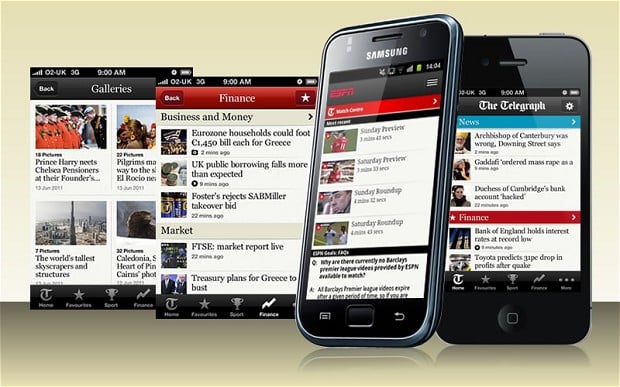
UK news publisher Telegraph Media Group (TMG) is the latest to try two vogeuish flavours of reader payment – metered access, and charging overseas readers.
The company today begins charging £1.99 per ($3.20) month for up to 20 Telegraph articles via website and mobile app, and £9.99 ($16) per month for full tablet access.
But, while UK mobile and tablet apps already require subscriptions at those prices, UK web access will remain free. This move simply extends the mobile and tablet subscriptions overseas and introduces a web meter there.
TMG has spent a year or two deliberating its paid content strategy. The result is coherent…
About 62 percent of The Telegraph‘s 51 million unique monthly web visitors are from overseas.
Though reported consumer scepticism persists around charging for news, the meter is emerging as a viable mechanism for the ambition publishers still nonetheless harbour. The New York Times’ 10-articles-free meter has grown its revenue and circulation whilst not hurting visitor count as badly as a hard wall might have (actual traffic impact reports vary between comScore declarations and NYT statements).
The Telegraph is going more liberal than that, with a 20-articles-free sweetener that sets a bar beyond which it will capture its most frequent readers as subscribers.
At home, The Telegraph already leads the market for print subscriptions. A remarkable 57 percent of its daily weekday circulation is from regular subscribers (source: ABC, September 2012 calculation). That gives the publisher impressive revenue dependability in a declining market. And this online move could extend that fact to digital overseas.
Before it, The Onion and The Independent have dipped their toes in the paid news segment with the same approach – by tentatively charging readers outside their home market.
But, for the Indy, it has not gone well. The publisher is likely to tear down the programme under which it charged readers only in the U.S. and Canada, saying: “(It) has not delivered on the ambitions from a revenue standpoint. “If we … had a real following, particularly a subscription-based audience, I think we might have a different view on that.”
Whilst neither are tier-A global media brands, The Telegraph enjoys greater U.S. brand traction than the Indy, so stands a better chance at succeeding with this.
Certain rivals will excitedly welcome what The Telegraph‘s news means for them. Guardian News & Media has the opposite strategy – although it charges app subscriptions at home, it has gone entirely free in the States, hoping to build its audience.
Whether The Telegraph will eventually charge at home, too, remains to be seen. Clearly, that would be a bigger deal. The publisher is currently profitable. But its announcement for this move calls it the “next phase of (our) subscription strategy”. And the effort will clearly build learning in the team about how a meter might fare.
